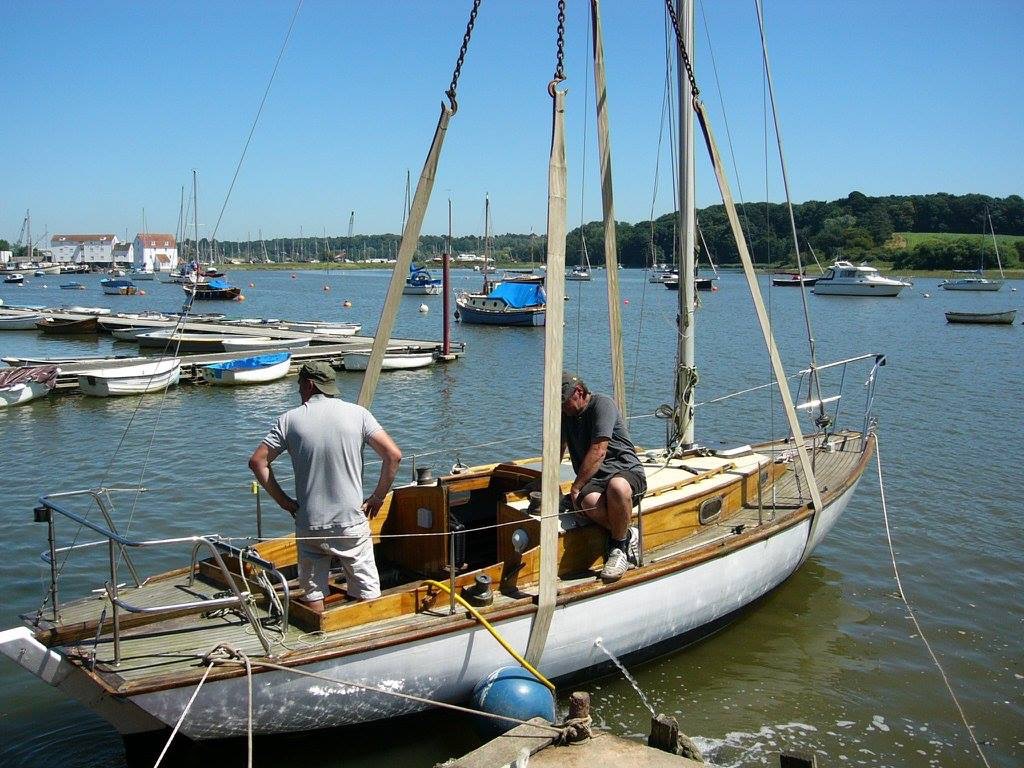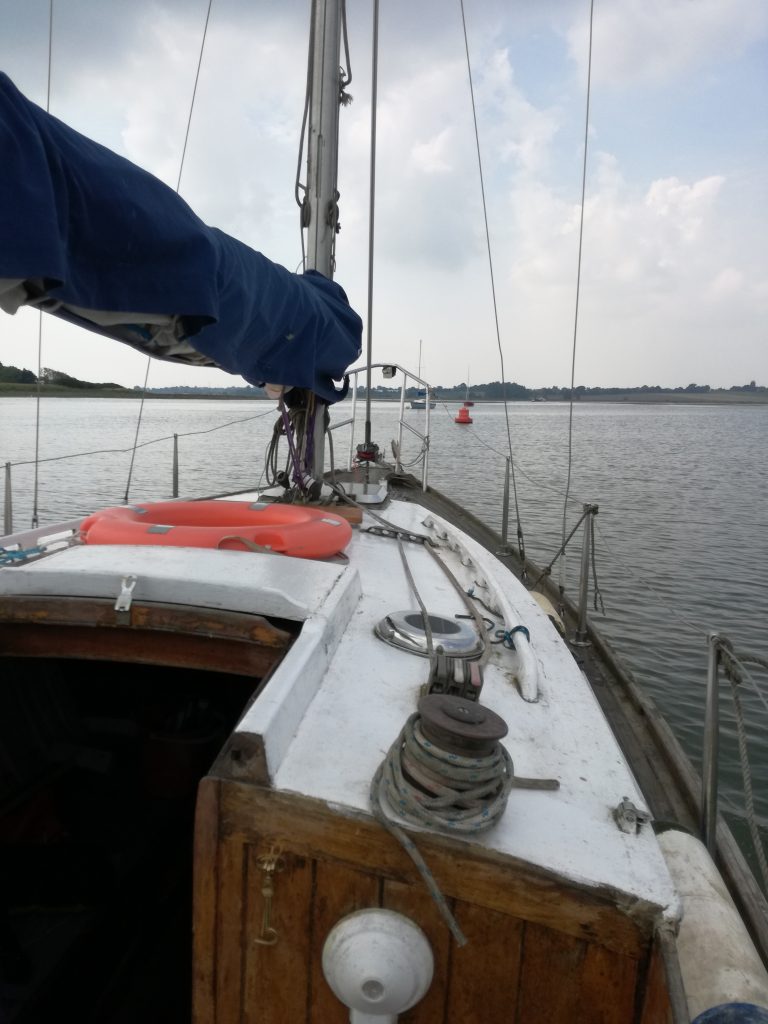I’ve only had it once that wasn’t in a dream. Literally, that sinking feeling, when there’s water coming up past the floorboards inside the boat and despite the fact you know, really you know, that thanks to the mud that makes up a large part of the River Deben, your boat can only possibly sink about two feet at most, given the tide, some primeval part of your brain is screaming much louder than the rational part. And it’s screaming something you don’t want to hear.
“You’re going to die! Very soon! do something!”
I’d had my boat out of the water for several years. I bought it when it had been out for at least two. I worked on it, sanded it, varnished it, painted it, antifouled it, made it look what used to be called all shipshape and Bristol fashion, which doesn’t mean it looked like gigantic breasts because that would be too silly. What I couldn’t do anything about was the fact that it had been out of the water for years and it was a wooden boat. They dry out. The wood shrinks. And the gaps between the planks that make up the hull don’t. In fact, they do the opposite.
I’d told Everson’s boatyard, the one with the crane to put it in the slings on Monday and crane it into the water, leave it on the slip in the slings and I’d come down again on Tuesday to sail it away.
A friend took the day off work to come down on Monday with me to see what was happening. As it turned out, nothing was. The crane driver was off sick. Monday. Nothing to do with a hangover, obviously. It never was when staff went sick on Monday at my company, after all. Ever. Whatever the reason, the boat wasn’t in its sling and the sling wasn’t on the crane. Apparently, their phone had broken as well, as they hadn’t told me not to bother driving down there and wasting my time.
When I came back on Tuesday, without my friend who was going to crew, they hadn’t even bothered to start the crane up. When they eventually did get the boat into the water it leaked. A lot. It’s called ‘taking-up.’ It means the water flows pretty much uninterrupted through the gaps between the planks. This is why you put the boat in the water the day before you want it. Except the yard couldn’t be bothered to do that, or to tell me they hadn’t.

The pump worked. It had to.
It’s only about a mile down the Deben to Kyson’s Point. You turn 90 degrees West there and it’s about another much more winding mile to the mooring. I did it all under engine and everything, on this sunny day, seemed fine. The engine started up, the pump was pumping hard, no wind to speak of, it was just gone High Water and I had a new job starting the next day, teaching at a French summer school on the banks of the Stour, then starting a screenplay for Film Suffolk. Plus I had a lovely boat under me. Life was good.

Life started to get less good when I got to the end of Martlesham Creek to find two things I hadn’t planned. First, the boat that was supposed to be out of my berth on the jetty was very much still in my berth on the jetty, and there wasn’t room for two. Second, and more immediately pressing, was the fact that the pump wasn’t keeping up with the inrush of water, as I saw when I looked down into the cabin and saw the floorboards floating. I did that because the odd noise I’d heard was an automatic lifejacket stowed under the seats had done what it was supposed to do when it was under water.
Don’t panic! Don’t panic!
Except I didn’t know what else to do. I’m in a rapidly drying-out channel, I can’t get onto my berth and the boat I’ve spent months making nice is sinking. It’s actually sinking. And I’m probably going to be drowned.
The fact I had a lifejacket on, the fact it could only sensibly have sunk about three feet at most, the fact that I could have stood on the cabin roof if it did without getting my sailing wellies wet, none of that came into my thoughts at all. The only thing that did was a primeval fear of drowning.
And of course, I didn’t drown. And nor did the boat actually sink, or not much more than it had, anyway. The boatyard owner told me to moor on the end of the jetty. When my voice was somewhere near a normal register I told him what was happening, so he told me to just point the boat at the bank and open the throttle. We’d sort it out later. Over there, between those two boats. I went for the gap, Fern softly stopped, we put some lines out fore and aft and that was pretty much that.
We got a big petrol-driven pump onboard and cleared her, then rigged a float so it would kick in if the water kept on coming in. From the streams of water visible under the cockpit floorboards that looked likely. I had to go to school so I couldn’t see Fern for about ten days after that. I ordered some caulking cotton and Stockholm tar but stopped short of buying proper caulking irons which was just as well, as Fern stopped leaking – sorry, taking-up – on the second day in her new berth, the yard told me. They’d checked. I’ve never caulked anything, then or since and never needed to.
I learned what a good boatyard I’d chosen, totally by accident, tucked away at the end of a forgotten creek in Suffolk. I learned that the tide goes out far and fast there too.

